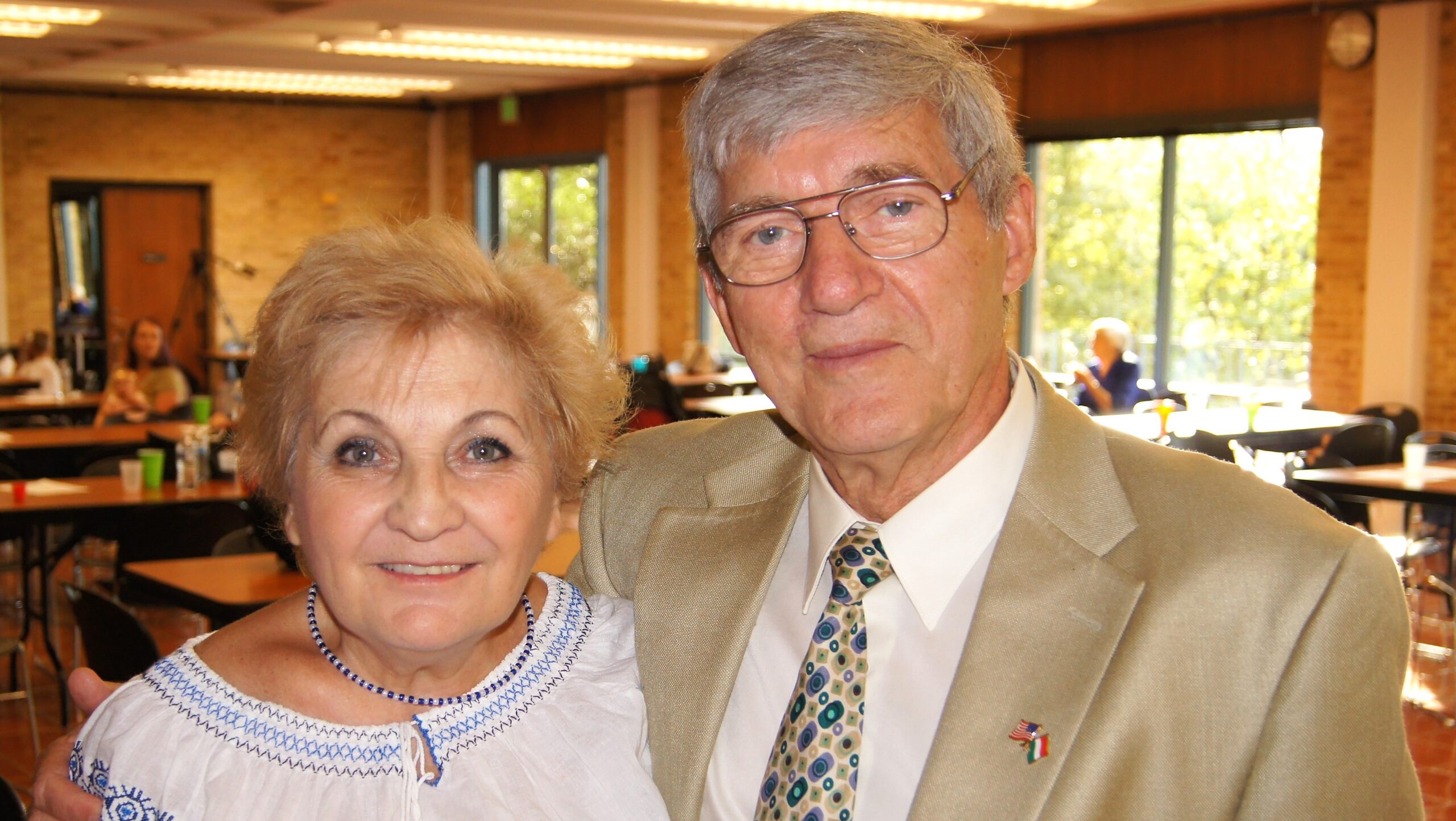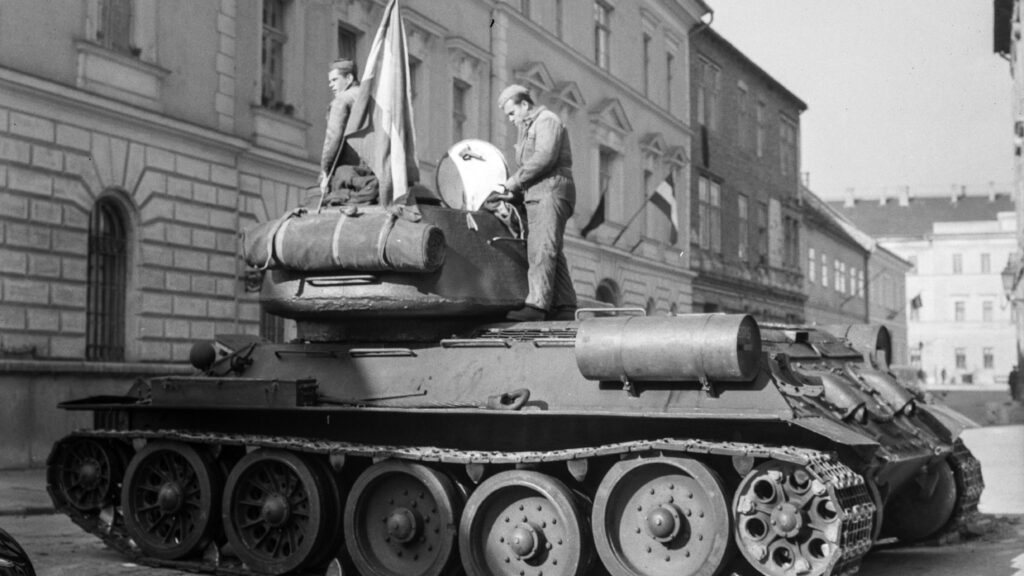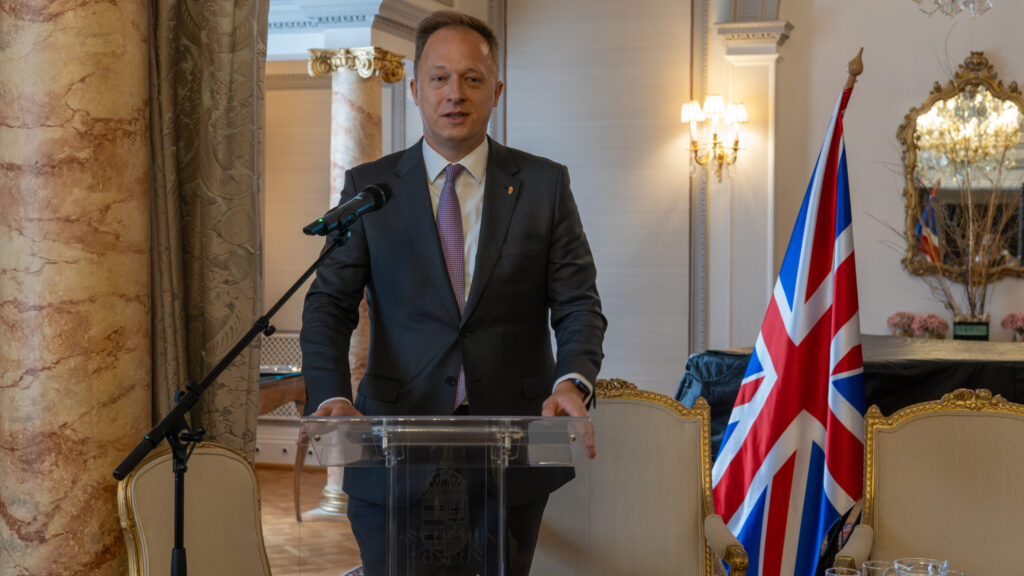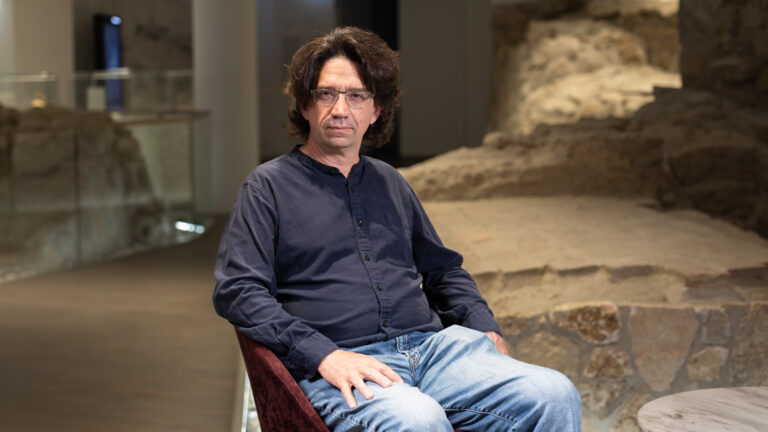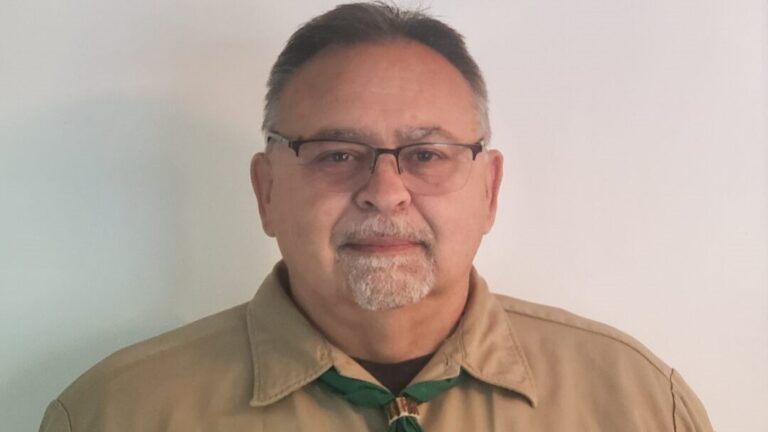I met Éva in Washington, D.C., at the Hungarian American Coalition’s Santa Claus Dinner. Since I had never met a Hungarian from Texas before, I happily asked her about her life and about Hungarians in Texas. I learned that there are three Hungarian communities in Texas (Dallas, Houston, and Austin) that co-organize their Diaspora School Camps. Hungarians in Dallas have a Hungarian Club, several Hungarian events, and a weekend Hungarian school—surprisingly, during the summer months. The last two Hungarian monks of the Cistercian Abbey, founded by Hungarian 56er refugee monks, are very old, but they hope that the Abbot will have some long-term plans to tend to the local Hungarian community needs.
***
It was an adventurous escape for you to get to America from Transylvania…
In 1976, my husband, his brother, our two-year-old daughter, and I left Romania. We were living in Bucharest at the time. After my husband graduated from engineering university, he had to work as an intern there for three years in a factory.
What about you?
In 1972, I also managed to get a very good job at the Agerpres in Bucharest—the Romanian news agency equivalent of MTI in Hungary. They were looking for a Hungarian translator and typist. I couldn’t type, but they hired me anyway and trained me in three months, so they didn’t have to employ two people for the job. We translated the central news from Romanian into Hungarian, which was then sent out to the local Hungarian press in the countryside. We loved it; the Hungarian team at the agency was great. In 1975, one of my reporter colleagues whispered to me: ‘Éva, if you want to flee, now is the time…’
What did he mean?
The Romanian communist dictator Ceaușescu pleaded to America for the Most Favored Nation treatment but was told at the 1975 Helsinki conference that they couldn’t have it because of human rights problems in Romania, such as the repression of minorities. They didn’t make a big deal of it publicly, but I heard through the grapevine that to get that benefit, Ceaușescu let large numbers of the German, Jewish and Armenian minorities living in Romania emigrate. He wanted to get rid of the Hungarians, too, but the Hungarian communist dictator János Kádár didn’t want to deal with large numbers of Hungarian refugees from Transylvania, so we couldn’t go to Hungary. My husband’s (and his brother’s) father was Catholic, but their mother was Jewish, so according to the Jewish laws of origin, they were too, thus they petitioned to be allowed to immigrate to Israel.
How did it turn out?
We succeeded. Of course, as soon as we asked for permission to emigrate, I was immediately fired from my job—I became a ‘class enemy’. But I didn’t regret it at all as I could stay at home with our one-year-old daughter. My husband and his brother were immediately accepted by Israel, so we were quickly released from Romania. We found out afterwards that the Romanian state had received money for us… We were practically sold; the price tags were $2,500 for university graduates, $1,500 for those with less education and $500 for children…
Wholesale human trafficking…
Indeed. So that’s how we arrived in Israel in mid-summer 1976. We didn’t know Hebrew, but we learned it. I loved living there; they didn’t make me feel bad, because I was not Jewish, I loved the climate, and I was happy to finally live in a country where I didn’t have to stand in long lines for basic foodstuff… But the boys didn’t like it so much, since one year after arrival, they were due to join the military. They even stopped taking language lessons and started working because they desperately wanted to immigrate to America. My husband was shoveling sand in the glass factory while I was at home with our daughter. My brother-in-law is a musician; he taught violin in a kibbutz. Since my daughter and I weren’t Jewish—and any more children I’d have wouldn’t be either—we got the UN’s permission to immigrate to America. That’s how we ended up in a refugee camp in Greece in early March 1977 and arrived in Amarillo, Texas, in the fall.
Why Texas?
After passing all the tests to make sure that we were neither sick nor communists or spies, they let us go on the condition that we had a sponsor. We were eventually sponsored by the Catholic Family Services in Amarillo, Texas, with whom we had no previous connection. When we arrived, with the organization’s help, my husband got a job within three days as a tool design engineer at the Bell Helicopter company. Some people we knew in California and elsewhere suggested we leave and move in with them, but we didn’t want to go anywhere; there were jobs here for us. We stayed and have lived in Texas ever since. We have had a great time here from the beginning. Soon after, our parents came to visit us, stayed even for three or four months with us, and then went home reassured that we hadn’t come to America to starve… (laughs)
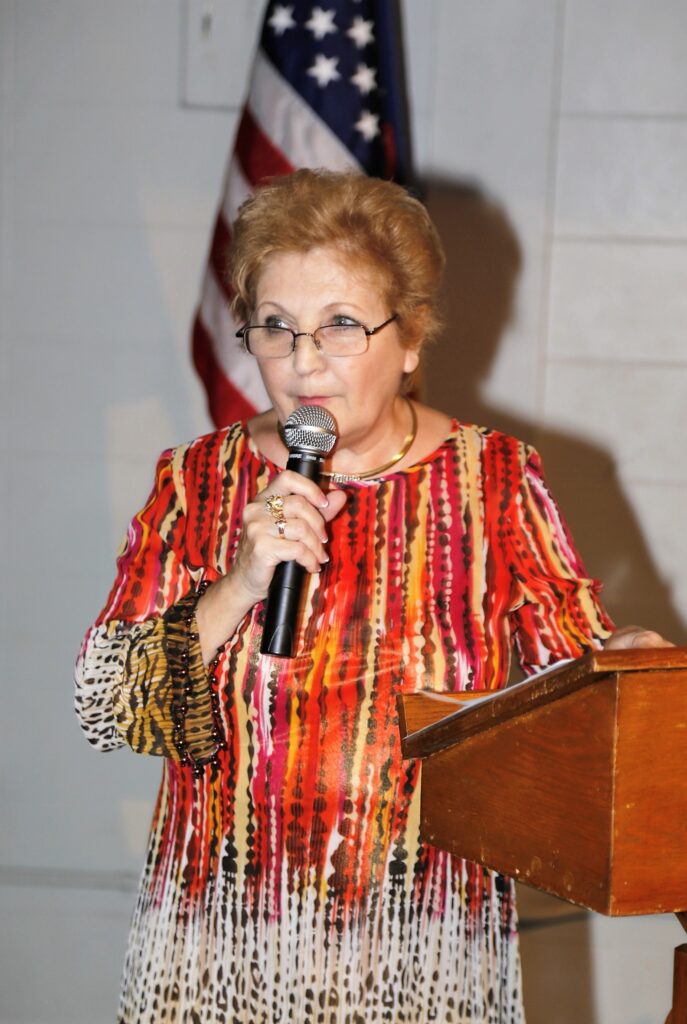
Was communist Romania allowed its citizens to visit America in the seventies?
Yes, because our parents were retired people. In fact, I think the Romanian communist government would have even preferred if they stayed here and left their pensions back home… In 1981, our son was born. We lived in Amarillo for six years, and when that helicopter factory closed, my husband was transferred to the main helicopter facility of the company in Hurst, near Dallas. We’ve been living here since 1983, very close to the big DFW airport. These so-called satellite towns completely coalesce; you don’t know where one ends and the other begins. They are called the Mid Cities because they are located between the two big cities of Dallas and Fort Worth.
Your husband found a job quickly. What about you?
I didn’t go to university in Romania as I had a child and I worked. I started studying in America when our daughter was a little older. She kept asking me: ‘Why is it that Mom always studies and Dad cooks every Sunday?’ (laughs) I wanted to be an architect, but eventually, I stopped ‘halfway’ and switched to electronics because it was easier and gave me more job opportunities. As soon as I finished school in 1984, I got a job at the aerospace company, then called General Dynamics, now Lockheed Martin. I worked there for 14–15 years. Meanwhile, the kids went to school and took various extracurricular classes.
Texas ‘worked’ for you. When did you contact other Hungarians there?
In the first few decades, we weren’t active in the Hungarian community. We had heard about a Hungarian church that we even visited a few times but couldn’t attend regularly because we were too busy with work and kids.
In the Cistercian Abbey, they’ve held a Hungarian Mass once every month since 1975 because Cardinal Mindszenty requested them to offer regular Hungarian Mass when visiting Texas in 1974. Previously, they had only English Masses. From then on, the abbey became the Mecca for the Hungarians living in the area, mainly 56ers. They started attending not only the Masses but also organizing Hungarian events. These Hungarians acted from the heart because they missed Hungary, the language, the culture, the food, and assumed they’d never go back…
How many Hungarians lived there at that time?
The abbey was founded by about 40 Hungarian refugee monks who fled in 1956, and the Catholic Diocese of Dallas gave them land and financial support to build a monastery. Over time, they built a school, and a few years later, they contributed to the founding of the Dallas Catholic University, where they were professors. As for the number of Hungarians, at that time, there was no Internet, no common database, only postal correspondence or telephone, so I don’t know the numbers, but I do know that since the early 1980s, they were organized via the Hungarian Club.
How did the Hungarian Club start?
This started as a cultural club, where poems were recited and read, Hungarian movies were watched, etc, and then they gradually began to organize May Day festivities, sausage dinner events, and all the gastronomic experiences that Hungarians enjoy. The Hungarians who later settled here in Texas pretty much all joined in.
How many of the 40 Hungarian monks are left?
Unfortunately, only two very old Hungarian monks are still alive by this time: one is 86 years old, and the other is 92. Father Julius Lelóczky walks around with an oxygen tank and cannot stand for a long time, Father Bernát Marton is legally blind. And there are no replacements. We cannot expect anybody from Hungary because there is a shortage of priests in the Cistercian Abbey in Zirc too. Father Bernát served there for eight years but has returned here because he became ill and is receiving better treatment here. He can no longer read, but he speaks and recites beautifully…
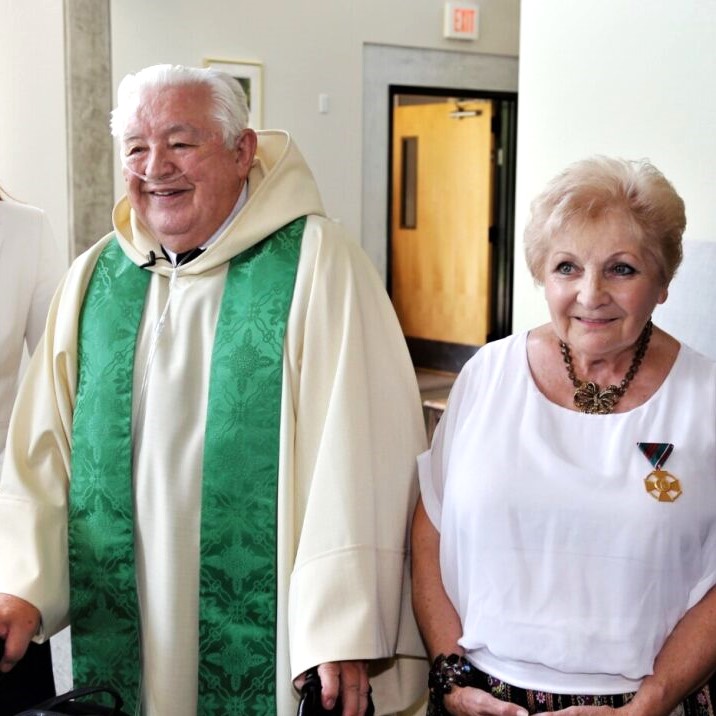
Who’s doing the service now?
Father Julius is not allowed to conduct the service alone, so there is now a hybrid Mass: Father Julius sits next to one of the American priests with his oxygen tank and reads, or Father Bernát recites by heart, or a volunteer reads. It’s a heartbreaking sight, but we are all grateful for them to be with us, and we are also prepared emotionally for the possibility that they might not be with us next week…
What about the Hungarian Club?
The club has never had its own venue, and for a long time, it wasn’t an official non-profit organization either. In 2002, the leadership decided to apply for the non-profit status mostly for tax exemption and fundraising purposes. The services are held in the abbey, the celebrations are held in the abbey’s school, other gatherings are held in private houses, and we rent a venue for larger events. There have been several attempts to buy a building of our own, and in the late 80s they even raised money for that purpose, but in the end none of the attempts succeeded…
When did you become actively involved in the local Hungarian community?
After our daughter graduated in 1992 from high school and went to university, my husband and I started volunteering. We did everything that had to be done.
What does it mean?
I took over the presidency in 2015, as the former president, Ágnes Csiffáry, resigned because she lost her job and couldn’t handle the club’s duties besides her new job. At first, we went together to the Diaspora Council meetings in Budapest, which were started in 2010 by the Hungarian government. Lately, only one person per community was allowed to attend, so I represent all of Texas alone—not just our group in Dallas but the other two Hungarian communities in Austin and Houston. In Austin, there is no non-profit organization; they are ‘just’ an informal circle (a meetup group), but they are very good and active, with generally younger members than our club in Dallas. In Houston, there is a non-profit organization that used to be very strong, but its former leadership has aged, and the current leadership is not very active… We try to involve all three cities as much as we can because we can accomplish more together.
What Hungarian events do you organize?
Our regular events are often accompanied by some unexpected events, such as the visit of the Debrecen Folk Ensemble or the then Hungarian Minister of Justice Judit Varga a few years ago, or recently Bishop Kornél Fábry, but usually, the same events are repeated every year. In February, we hold a carnival, and in early March we have a four-day KMCSSZ (Hungarian Scout Association in Exteris) Diaspora School Camp, organized by the three cities together. We rent a YMCA campsite near Austin, easily accessible by car; KMCSSZ provides the content, with Hungarian language classes in the mornings and play activities in the afternoons. At the beginning of March, it’s already spring here; flowers bloom, and we can do excursions, boating, and campfires in the evenings. The children really enjoy the camp and usually come back next year. The numbers vary from 30 to 45, from the age of six to fourteen.
How can you manage with that many children?
There are at least six to eight volunteer adults with us; some teach, and others only supervise. Local Hungarian volunteers do most of the work. I’m involved in the organizing aspect, but I also help at the camp if I can. I couldn’t attend last year because of my husband’s illness, but I’ve been there in previous years, and I’m going for two days this year, too.
What’s next on your calendar?
We have the 15 March celebrations: after the Hungarian Mass, there is a small program and a reception in the school. On the first Saturday of May, we have Mayfest, which is held on the property of a late Hungarian couple. It is now the property of a local church, but their heir, when selling the land after her parents passed away, stipulated in the contract that on the first Saturday of May the Hungarian Club could hold its Mayfest festivities there. So, the place is secured for us for the long term, and we recruit people to cook goulash and fry lángos. We also try to invite musicians, folk dancers or singers; even put up a maypole—it’s a fun get-together. In early June we start the weekend Hungarian language classes.
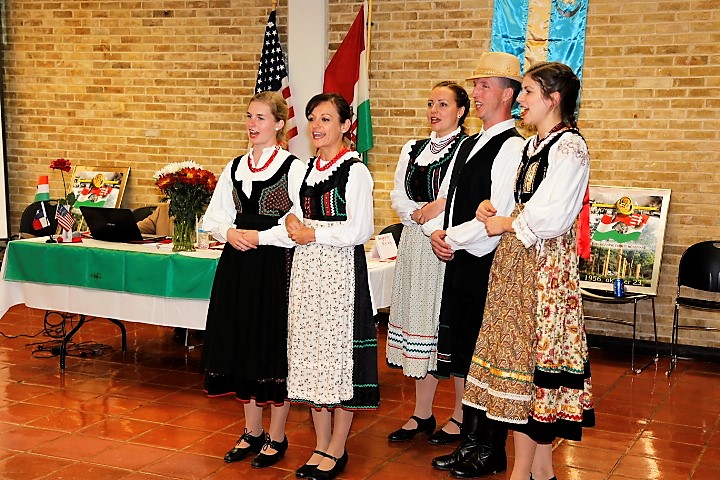
How come? Other places don’t have events in the summer, let alone school…
Texas has a very strong after-school sports program, especially American football and Marching band during school time; kids wouldn’t be able to come, either on weekday evenings or weekends, because there are always games and tournaments for them. That’s why we hold the school in the summer, from Saturday mornings to afternoons. We usually have up to 40 students divided into several groups because they are of very different ages and have varying language skills. We usually start with three classes; we have three teachers and three substitute teachers because no one can be expected to dedicate their Saturdays for three summer months.
Is it also a collaboration with the other two Hungarian communities in Austin and Houston?
It’s not a joint effort of the other cities; it’s just us, the Hungarian Club of Dallas. We had one rare ‘white raven’ who came from Oklahoma City every time, driving a total of ten hours back and forth to spend three hours learning Hungarian with us… Since Dallas is a huge area without a public transport system, no one can be expected to drive two hours or more to get to the classes. We’ve been running parallel classes for the last two years. In the north Dallas area, in Plano, three teachers taught Hungarian classes, while we alternated with another teacher in the Mid Cities. Usually, we hold our classes in local churches or in public library rooms.
You mentioned very different ages. What age range do they come from?
More adults than children. Most of the people who come to learn Hungarian are descendants of several generations of Hungarians who immigrated in the past, who treasure some of their heritage, and who want to learn Hungarian. Others are spouses of Hungarians who want to understand their husband or wife. One grandmother, who came to America as a child in 1956, came to our classes with her daughter and granddaughter because she had forgotten Hungarian. Others come to prepare for the citizenship language test. Our students are all very enthusiastic about learning Hungarian.
We usually applied for Kőrösi Csoma Program (KCSP) interns. We’ve had four or five young people rotated in the 2010s who helped us teach Hungarian and folk dance, but unfortunately, the last one came in 2019 and was stuck here because of the COVID-19 pandemic. We have occasionally borrowed someone from Chicago, New York, or elsewhere for an event, but we plan to apply again soon for an intern.
They typically come from September to June, but you’d need them for summer…
True; one year, the KCSP sent someone from the southern hemisphere group. We really can’t use a KCSP intern for nine months, so we’ll make a deal, jointly apply and share them, either with Austin or Houston. We’ve also had interns who we let go to Florida because there was more of a need there. But nowadays it would be very important for us to get help in the Hungarian school because we have started teaching not only the language but also Hungarian history. After school is over, usually on 20 August, on St Stephen’s Day, our students do a performance for us, showing off what they have learnt during the summer.
I suppose in the autumn there is the celebration of 23 October… How many people come to these events?
Yes, and that’s the end of our activities because as soon as the winter holidays start, people are busy with those and don’t come to other Hungarian events. Nevertheless, we have a small Christmas gathering at the end of the year, but it’s not a big event; we just get together, either in the church or in the school, and sing Christmas carols. That’s how we end the year, and then it starts all over again with the carnival, usually in February.
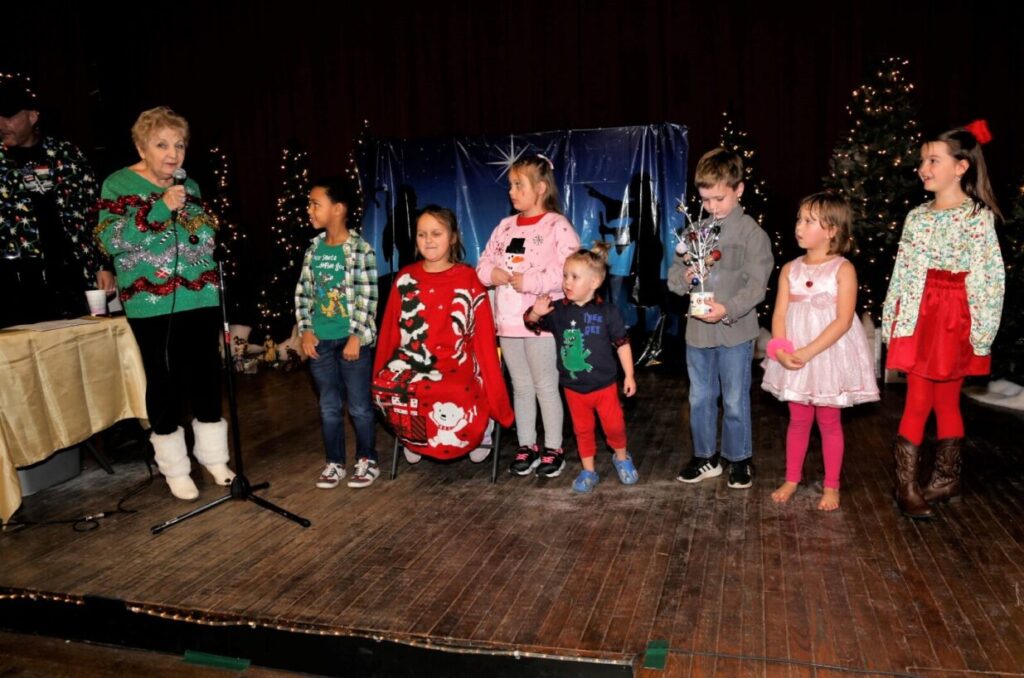
What has been the largest number of people at these meetings so far?
I have contacts of at least 600 Hungarians in the Dallas area, but they never turn up all at the same time. 150–200 come to one event, and another 100–140 to another event, depending on the theme. I think the maximum number we managed to gather was on the 60th anniversary of the 1956 revolution when we had about 280 in attendance. That year, we also wrote and published a bilingual book with 16 Texan 56er’s memories. It was a wonderful collective effort. It was so successful that our book ended up in several Hungarian cities’ libraries, even in the National Széchényi Library in Budapest!
You also host consular days. Where do you belong at the consular level?
Hungarians in Dallas belong to the Consulate General in Los Angeles, but in order to save people from having to fly there with the family and pay for a hotel for an official matter—birth, death, wedding, divorce, renewal of expired passports, citizenship, etc—I usually ‘beg’ the Consulate General in Los Angeles to come and provide us with consular days from time to time. Next time it will be on 26–27 February in Dallas, and then on 28 February and 1 March in Houston.
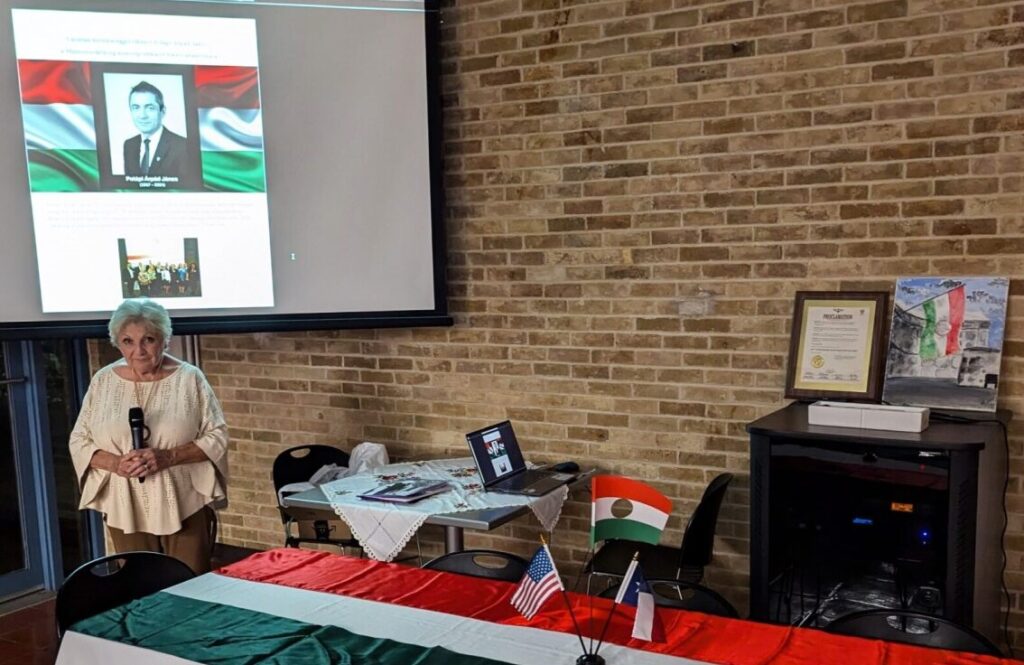
We met at the Hungarian American Coalition (HAC) event last time. Does it mean that you are a member of the Coalition?
Yes, I represented the Hungarian Club at the HAC Mikulás Dinner and at the board meeting the next day. It all started when Texas Hungarians were redistricted from Los Angeles to the Hungarian Embassy in Washington, D.C., for a few years, and during that time, I travelled several times to attend various events in D.C. Since some regional diaspora meetings were held at the Hungarian Embassy, I always went to those meetings, too, and thus, I got to know them. We joined HAC as supporting members as we realized that it’s always good to have an experienced, larger umbrella organization behind us for a small organization like ours. We were later moved back to Los Angeles at the consular level, so I go to Washington D.C. less often, usually for the HAC annual board meeting only or if I’m invited to a special event at the Hungarian Embassy.
What about your family?
My husband passed away last July. He’d been living with cancer for 18 years as he had very good treatment, but for the last two or three years, he was in a very bad condition. Our daughter Erika, born in Kolozsvár, Romania, now lives in Denver, Colorado, with her American husband and their twin daughters, who will graduate from high school this year. Their mother speaks, writes and reads Hungarian perfectly, but the girls don’t. Although I spent a lot of time with them when they were small, not enough time to teach them Hungarian. During the COVID-19, I taught them some Hungarian via Skype. They also visit Hungary and their cousins there quite often, where some Hungarian sticks with them, but they aren’t fluent. Our son Daniel, born in Amarillo, is a real ‘born and raised in Texas’ person, but he lives in Budapest with his family. He went there to teach English as a native speaker in a school in Óbuda and later in an American school. He fell in love with Budapest first, then with a Hungarian girl and got married. In addition to their five-year-old daughter, on Christmas day, they had a boy born. Dani speaks Hungarian very well but uses English with his children, while his wife and the grandparents speak Hungarian to them.
Finally, how do you see the future of the community? You’ve been running the Club for ten years, you’re obviously very energetic, but not getting any younger…
Many young people come here from Hungary with work visas, who like to come to our carnivals and other festivities, but unfortunately, they aren’t interested in Hungarian culture or traditions—maybe because they are going back soon, or they send their children back home to their grandparents in the summer anyway, or they don’t have children yet. But there are always one or two enthusiastic volunteers among them. Somehow, we always manage because we are a very good and cohesive community, but unfortunately, the newcomers are nowhere near as enthusiastic as the 56ers were… The fate of the Hungarian Masses and our access to the church is also very much up in the air. I fear that if these two old priests close their eyes for good, it will be the end of not only the Hungarian Mass here but also of the community because we’ll no longer have any connections to the abbey.
So, unfortunately, I don’t see a bright future, but we don’t give up hope. There is a recent encouraging development: archpriest Fr. Peter plans to send young American priests to Hungary. He recently told us that they’d need some Hungarian classes to have some basic knowledge of Hungarian before they leave for Hungary. When I asked him about the details, he said: these young priests will be teaching English in Cistercian schools in Hungary, and they’ll come back in a few years, so that gives us the glimmer of hope that we can still have a Hungarian-speaking priest in the long run. It’s a long-term plan, but we hope it will work out… In any case, Fr. Peter seems to be serious. He is tough as a nut to crack, but he’s very logical. He’s a better abbot and has a better relationship with us, the Hungarians, than some of his predecessors, so we like him a lot, and we trust him.
Read more Diaspora interviews:

